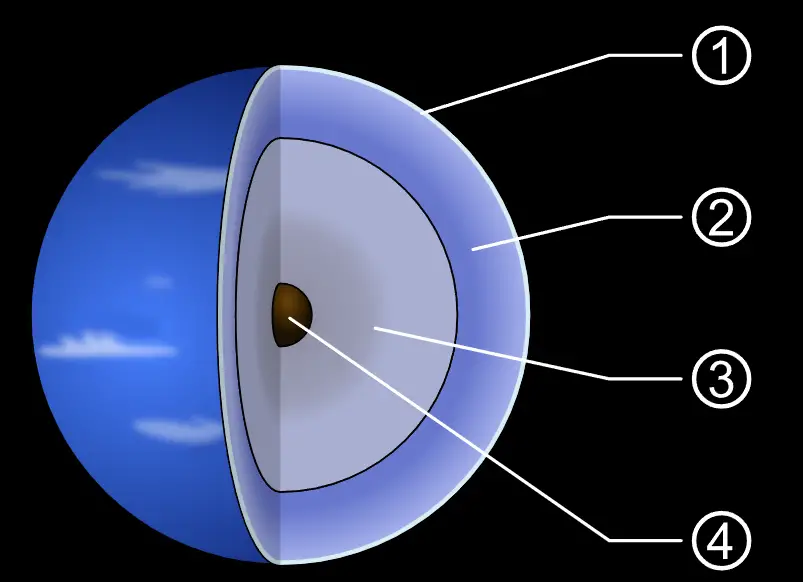The force that controls the motion of heavenly bodies, gravity, also plays a significant part in the process of sculpting the properties of the planets that make up our solar system. Neptune, the eighth and farthest known planet from the Sun, is one of the members of this planetary family that is considered to be among the most intriguing and mysterious. The majesty of Neptune’s look and the hue of its deep blue color have piqued the interest of both scientists and people who are passionate about space. When attempting to gain a grasp of the physical characteristics of Neptune, one of the most important questions that emerges is as follows: how powerful is the gas giant’s gravity?
Neptune is a huge planet with a diameter of around 30,775 miles (49,528 kilometers). It was given its name after Poseidon, the Roman deity of the sea. It is the third-most massive planet in our solar system and the fourth-largest planet by diameter in our solar system. Jupiter and Saturn are the only planets that are larger than it. Because of its enormous size, one may expect that Neptune’s gravity would be considerably more powerful than that of Earth, and this prediction is confirmed by observations.
On Neptune, the acceleration of gravity is roughly 17.1 meters per second squared (m/s2), which is approximately 1.76 times as strong as the gravity that we feel here on Earth. To put this into perspective, if you were to step on the surface of Neptune, you would experience a sensation of weight that is nearly twice as intense as what it is here on Earth. The mass of Neptune, which is approximately 17 times that of Earth, is the primary contributor to this planet’s significantly stronger gravity. Neptune’s gravitational pull is significantly more powerful than that of our own planet because of the enormous amount of material that is jammed into its interior.
The powerful pull of Neptune’s gravity can also be felt in other parts of the planet. For example, because of the planet’s gravity, it has a very thick layer of gas that is trapped all around it, making the atmosphere very dense. Because of the predominant presence of hydrogen, helium, and trace amounts of methane in the atmosphere, the color of Neptune is distinctly blue. These gases are kept on Neptune by the planet’s tremendous gravity, which also serves to prevent them from escaping into space.
In addition, Neptune’s gravity affects its most recognizable feature, which is called the Great Dark Spot and is analogous to Jupiter’s Great Red Spot. The powerful winds and gravitational forces of this planet are responsible for the formation and upkeep of this enormous storm system, which can be many times the size of Earth. These kinds of storms are able to persist for extended periods of time because of the intricate interactions that take place between gravity, air pressure, and the rotation of the planet.
Scientists have relied on spacecraft missions such as NASA’s Voyager 2, which made a close pass by the planet Neptune in 1989, in order to gain a better understanding of the planet’s gravity. These missions collected important data on the gravitational field of Neptune, which helped shed light on the planet’s composition and internal structure. In spite of this, comprehensive investigation of Neptune and additional research into its gravity will continue to be difficult for future missions because of the planet’s great distance from Earth and its harsh environment.
In conclusion, the gravitational pull of Neptune is approximatively 1.76 times stronger than that of Earth. This indicates that the gravitational pull of Neptune is much stronger than that of Earth. The enormous gravitational pull that Neptune exerts as a result of its enormous mass is one of the most important factors in determining its atmospheric conditions and ensuring that its distinctive traits are preserved. Understanding the forces at work on faraway planets like Neptune opens up new paths for uncovering the mysteries of our heavenly neighborhood as we continue our investigation of the enigmas of our solar system.
![]()
